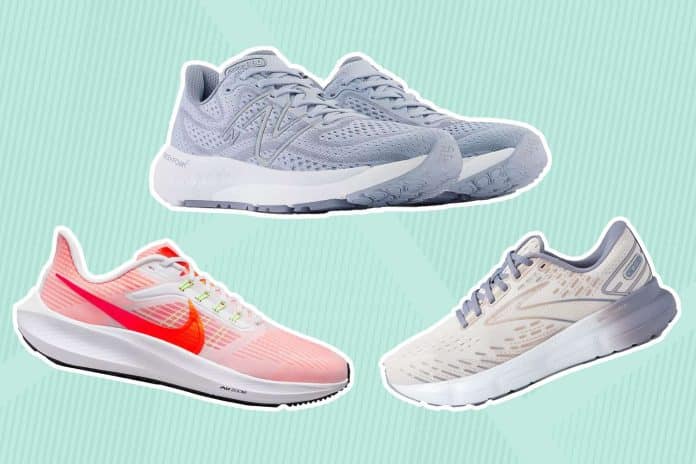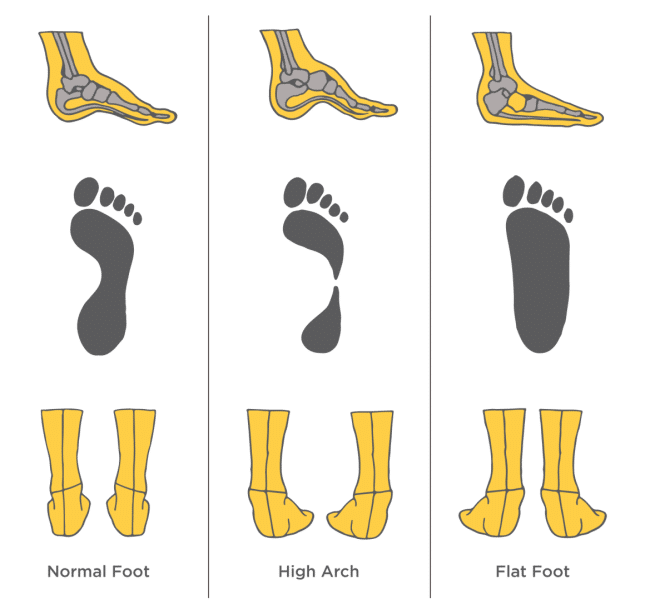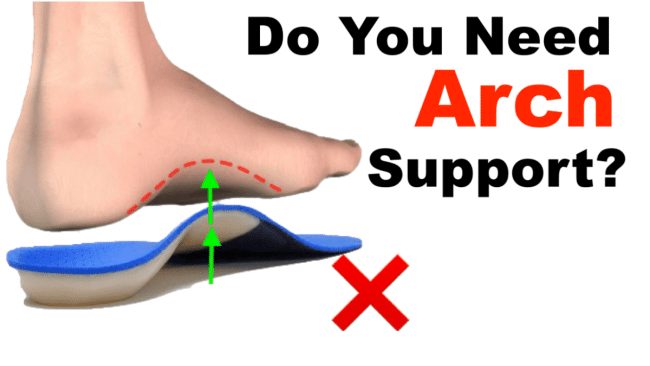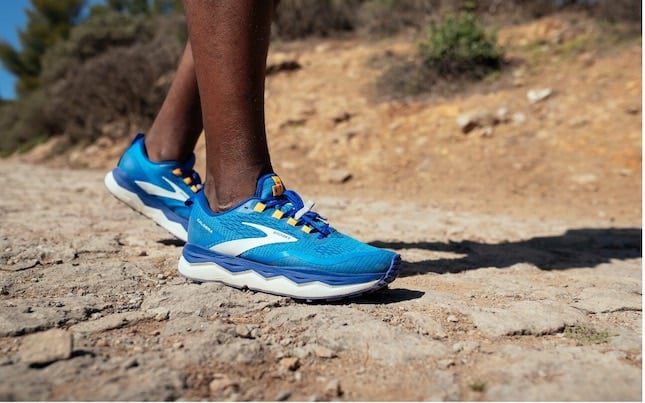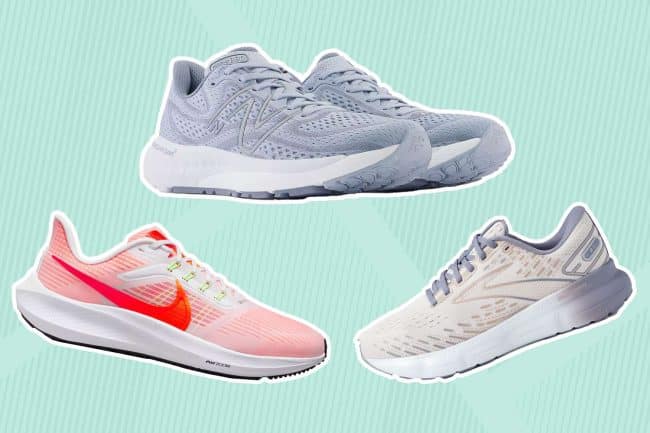Let’s talk about the importance of arch support in running shoes. Many people wonder whether it’s necessary, and we’re here to shed some light on the matter. Arch support plays a crucial role in providing stability, comfort, and preventing injuries during your runs. In this article, we’ll explore the benefits of having proper arch support in your running shoes and why it’s essential for runners of all levels. So, if you’ve ever pondered about arch support, keep reading to find out the answer to that burning question: Do I need arch support in my running shoes?
Review contents
What is Arch Support?
Definition
Arch support refers to the structure or devices built into shoes to provide additional support to the arch of the foot. The arch is the curved part of the foot that runs from the heel to the ball of the foot and is crucial for distributing body weight evenly and absorbing shock during physical activities. Arch support helps maintain the natural position of the foot, providing stability and preventing excessive pronation or supination.
Purpose
The main purpose of arch support in running shoes is to provide proper alignment and support to the foot. This helps prevent injuries, improves stability, and reduces pain and discomfort during running. Arch support works by distributing the forces evenly across the foot, reducing the strain on the arch and surrounding structures. It also helps maintain a neutral foot position, which is essential for efficient and comfortable running.
Types of Arch Support
There are various types of arch support available in running shoes, each designed to cater to different arch types and foot conditions. Some common types of arch support include:
-
Cushioned Arch Support: These running shoes feature cushioning material built into the arch area to provide additional comfort and support.
-
Orthotic Arch Support: These shoes come with removable or custom orthotic inserts that can be adjusted to provide personalized arch support based on individual foot needs.
-
Medial Arch Support: These shoes have a higher density of cushioning material on the inner side of the arch, which helps control overpronation and offers added stability.
-
Neutral Arch Support: Neutral arch support shoes have minimal arch support and are suitable for individuals with a neutral foot position and good arch strength.
The type of arch support needed depends on an individual’s arch type and specific footwear needs.
Importance of Arch Support in Running Shoes
Prevents Overpronation
One of the key benefits of arch support in running shoes is its ability to prevent overpronation. Overpronation occurs when the foot rolls excessively inward during the running gait, which can lead to various foot and ankle issues. Arch support helps align the foot and ankle, reducing excessive pronation and promoting a more natural running motion.
Provides Stability
Arch support is crucial for providing stability while running. It helps distribute the forces evenly across the foot, reducing the risk of imbalances and foot instability. With proper arch support, runners can maintain a steady and efficient stride, minimizing the chances of tripping or falling.
Reduces Pain and Discomfort
Running without adequate arch support can lead to foot pain, discomfort, and even injury. Arch support helps alleviate pressure on the arch and surrounding structures, reducing the risk of conditions such as plantar fasciitis, Achilles tendonitis, and shin splints. By providing proper support to the foot’s natural shape, arch support helps prevent strain and promotes a more comfortable running experience.
This image is property of www.ogdenclinic.com.
Determining Your Arch Type
Wet Test
To determine your arch type, you can perform a simple wet test at home. Wet the sole of your foot and step onto a surface that will leave a clear imprint, such as a dark piece of cardboard or paper. If the imprint shows a narrow strip connecting the heel and ball of the foot, you likely have a high arch. If the entire foot appears on the imprint with no significant curve, you may have a low arch. If the imprint shows a moderate curve connecting the heel and ball of the foot, you likely have a neutral arch.
Footwear Analysis
Another way to determine your arch type is by analyzing the wear pattern on your old running shoes. Examine the soles of the shoes to identify whether there is more wear on the inner edge (pronation) or outer edge (supination) of the sole. Pronounced wear on the inner edge suggests overpronation, while wear on the outer edge indicates supination. A more centralized wear pattern suggests a neutral arch.
Consulting a Podiatrist
For a comprehensive and accurate assessment of your arch type, it is best to consult a podiatrist or a footwear specialist. They can conduct a thorough analysis of your feet, including static and dynamic assessments, and recommend the most suitable arch support for your specific needs. A professional evaluation ensures you receive the correct level of support to prevent any potential issues.
Different Arch Types and Their Needs
High Arch
Individuals with a high arch have a prominent arch and often deal with less shock absorption during physical activities. They require running shoes with cushioning and flexibility to compensate for the higher arch. Shoes with a cushioned arch support system or additional padding throughout the midsole provide the necessary shock absorption and support for high arches. Additionally, shoes with a wider base and a deeper heel cup ensure stability and help evenly distribute the weight across the foot.
Low Arch
Those with a low arch, commonly known as flat feet, have minimal or no arch visible. They typically require running shoes with good arch support and stability features. Shoes with a medial arch support system provide extra support to control overpronation, reducing the risk of injuries. The shoes should also have firm midsole cushioning and a structured upper for added stability and motion control.
Neutral Arch
Runners with a neutral arch have a balance between the high and low arch characteristics. Their arch is neither too high nor too flat, offering good shock absorption and stability. Runners with a neutral arch type can benefit from various types of running shoes, including those with neutral arch support or mild cushioning. The focus should be on finding shoes that offer a comfortable fit and are suitable for the intended running terrain.
This image is property of i0.wp.com.
Signs that You Need Arch Support
Foot Pain
Foot pain, particularly in the arch area, is a common sign that you may need arch support. Pain can range from aching, stabbing, or burning sensations, and it is often exacerbated during running or intense physical activities. Arch support helps alleviate this pain by providing proper alignment and reducing the strain on the arch and surrounding structures.
Knee and Hip Pain
Improper arch support can lead to misalignment issues, causing knee and hip pain. When the arch collapses or overpronation occurs, it can create imbalances in the lower extremities, leading to increased stress on the joints. Arch support helps correct this misalignment, improving overall lower limb biomechanics and reducing the risk of knee and hip discomfort.
Lower Back Pain
Inadequate arch support can also contribute to lower back pain. When the foot does not receive proper support and alignment, it can cause an imbalance throughout the kinetic chain. The resulting misalignment can lead to increased strain on the lower back muscles and structures. Arch support helps maintain proper alignment, reducing the risk of lower back pain.
Considerations When Choosing Running Shoes with Arch Support
Cushioning
The level of cushioning in running shoes is an essential factor to consider when looking for arch support. Runners with high arches require more cushioning to compensate for the reduced shock absorption, while those with low arches may need firmer cushioning for greater support and stability. The cushioning should be adequate for the intended running distance and terrain, ensuring optimal comfort and impact absorption.
Stability
Stability is crucial in preventing excessive pronation and maintaining proper alignment. Look for running shoes with added stability features, such as a medial arch support system, a firm heel counter, and supportive overlays. These elements help control overpronation, providing stability and preventing potential injuries.
Flexibility
While arch support is necessary, it is also important to find running shoes that offer flexibility. The shoes should provide a natural range of motion to allow the foot to move comfortably while running. Look for shoes with a flexible midsole and outsole, ensuring a responsive and efficient running stride.
This image is property of hips.hearstapps.com.
Alternatives to Arch Support in Running Shoes
Orthotic Inserts
Orthotic inserts are customized devices that fit inside running shoes to provide individualized arch support. These inserts can be prescribed by a podiatrist or purchased over-the-counter. They can be particularly beneficial for individuals with specific foot conditions, such as plantar fasciitis or flat feet. Orthotic inserts can be easily swapped between different pairs of running shoes, providing consistent arch support.
Exercises and Stretches
In addition to wearing running shoes with arch support, exercises and stretches can help strengthen the foot muscles and improve arch stability. Exercises like toe curls, arch lifts, and calf raises can target the muscles that support the arch. Stretching exercises, such as towel curls and toe stretches, can also help improve flexibility and reduce tension in the foot.
Strengthening the Foot Muscles
Strengthening the foot muscles through specific exercises can also help improve arch support. Practicing barefoot activities, walking on sand or grass, and using foot strengthening tools like resistance bands or balance boards can help enhance the muscles responsible for maintaining a strong arch. Strong foot muscles provide additional stability and support, reducing the reliance on external arch support.
Potential Risks of Inadequate Arch Support
Injury and Overuse
Running without proper arch support can increase the risk of injury and overuse. Without the necessary support, foot structures are subjected to excessive stress and strain, leading to conditions such as plantar fasciitis, stress fractures, and tendonitis. Adequate arch support helps distribute forces evenly, reducing the risk of overuse injuries and allowing for a safer and more enjoyable running experience.
Misalignment Issues
Inadequate arch support can contribute to misalignment issues throughout the body. When the foot is not properly supported, it can lead to imbalances in the lower extremities, affecting the ankle, knee, hip, and even the spine. These misalignments can result in discomfort, limited mobility, and increased susceptibility to injuries. By providing proper arch support, these misalignment issues can be prevented or minimized.
Development of Flat Feet
Insufficient arch support over time can lead to the development of flat feet or fallen arches. Flat feet occur when the arch collapses and the foot loses its natural shape and support. This can lead to painful foot conditions and affect overall foot mechanics. By consistently wearing running shoes with proper arch support, the risk of developing flat feet can be significantly reduced.
This image is property of www.brooksrunning.com.
Professional Advice on Arch Support
Expert Recommendations
Experts generally recommend arch support for most individuals, as it provides additional comfort, support, and stability during running. However, the specific type and level of arch support needed may vary depending on factors such as foot anatomy, arch type, running style, and any existing foot conditions. It is always beneficial to consult with a healthcare professional or a specialist in podiatry or sports medicine to receive personalized advice based on individual needs.
Individual Variations
It is important to remember that each individual may have unique foot characteristics and requirements. While arch support is generally beneficial, some individuals may find that they do not require as much support due to their natural foot mechanics and strong foot muscles. On the other hand, those with specific foot conditions or structural abnormalities may require more specialized arch support options. Taking into account individual variations ensures that the arch support chosen is tailored to specific needs.
Visiting a Specialty Running Store
To ensure the best fit and the most appropriate arch support, visiting a specialty running store can be beneficial. These stores often have knowledgeable staff who can analyze your foot shape, assess your arch type, and recommend running shoes with suitable arch support. They may also provide gait analysis to help identify any issues with your running form. Trying on different models and designs can give you a better understanding of the arch support options available and help you find the perfect fit for your running needs.
Conclusion
Incorporating proper arch support in running shoes is essential for a comfortable and injury-free running experience. Arch support helps maintain proper alignment, provides stability, and reduces the risk of pain and discomfort. By understanding your arch type, recognizing the signs that you need arch support, and considering factors such as cushioning, stability, and flexibility when choosing running shoes, you can ensure optimal support for your feet. Alternatives to arch support, such as orthotic inserts, exercises, and foot muscle strengthening, can also be beneficial. Seeking professional advice and visiting a specialty running store can further enhance your understanding and selection of the right arch support for your specific needs. Take care of your feet and invest in proper arch support to enjoy running to the fullest.
This image is property of www.verywellfit.com.

